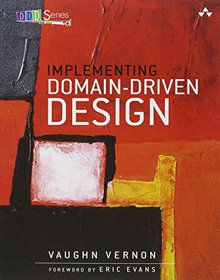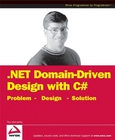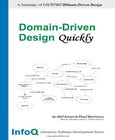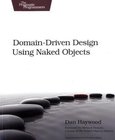Implementing Domain-Driven Design

Book Details:
| Publisher: | Addison-Wesley Professional |
| Series: | Addison Wesley |
| Author: | Vaughn Vernon |
| Edition: | 1 |
| ISBN-10: | 0321834577 |
| ISBN-13: | 9780321834577 |
| Pages: | 656 |
| Published: | Feb 16 2013 |
| Posted: | Feb 01 2015 |
| Language: | English |
| Book format: | |
| Book size: | 29.34 MB |
Book Description:
'For software developers of all experience levels looking to improve their results, and design and implement domain-driven enterprise applications consistently with the best current state of professional practice, Implementing Domain-Driven Design will impart a treasure trove of knowledge hard won within the DDD and enterprise application architecture communities over the last couple decades.' Randy Stafford, Architect At-Large, Oracle Coherence Product Development 'This book is a must-read for anybody looking to put DDD into practice.' Udi Dahan, Founder of NServiceBus Implementing Domain-Driven Design presents a top-down approach to understanding domain-driven design (DDD) in a way that fluently connects strategic patterns to fundamental tactical programming tools. Vaughn Vernon couples guided approaches to implementation with modern architectures, highlighting the importance and value of focusing on the business domain while balancing technical considerations. Building on Eric Evans' seminal book, Domain-Driven Design, the author presents practical DDD techniques through examples from familiar domains. Each principle is backed up by realistic Java examplesall applicable to C# developersand all content is tied together by a single case study: the delivery of a large-scale Scrum-based SaaS system for a multitenant environment. The author takes you far beyond 'DDD-lite' approaches that embrace DDD solely as a technical toolset, and shows you how to fully leverage DDD's 'strategic design patterns' using Bounded Context, Context Maps, and the Ubiquitous Language. Using these techniques and examples, you can reduce time to market and improve quality, as you build software that is more flexible, more scalable, and more tightly aligned to business goals. Coverage includes Getting started the right way with DDD, so you can rapidly gain value from it Using DDD within diverse architectures, including Hexagonal, SOA, REST, CQRS, Event-Driven, and Fabric/Grid-Based Appropriately designing and applying Entitiesand learning when to use Value Objects instead Mastering DDD's powerful new Domain Events technique Designing Repositories for ORM, NoSQL, and other databases
Download Link:
Related Books:
.NET Domain-Driven Design with C#
Problem - Design - Solution
As the first technical book of its kind, this unique resource walks you through the process of building a real-world application using Domain-Driven Design implemented in C#. Based on a real application for an existing company, each chapter is broken down into specific modules so that you can identify the problem, decide what solution will provide the best results, and then execute that design to solve the problem. With each chapter, you'll build a complete project from beginning to end....
Domain-Driven Design Quickly
Domain Driven Design is a vision and approach for dealing with highly complex domains that is based on making the domain itself the main focus of the project, and maintaining a software model that reflects a deep understanding of the domain. This book is a short, quickly-readable summary and introduction to the fundamentals of DDD; it does not introduce any new concepts; it attempts to concisely summarize the essence of what DDD is, drawing mostly Eric Evans' original book, as well other sources since published such as Jimmy Nilsson's Applying Domain Driven Design, and various DDD discussion forums. The main topics covered in the book include: Building Domain Knowledge, The Ubiquitous Language, Model Driven Design, Refactoring Toward Deeper Insight, ...
Domain-Driven Design Using Naked Objects
Domain-driven design (DDD) focuses on what matters in enterprise applications: the core business domain. Using object-oriented principles, you can develop a domain model that all team members-including business experts and technical specialists-can understand. Even better, this model is directly related to the underlying implementation. But if you've tried building a domain-driven application then you'll know that applying the DDD principles is easier said than done. Naked Objects, an open-source Java framework, lets you build working applications simply by writing the core domain classes. Naked Objects automatically renders your domain object in a generic viewer--either rich client or HTML. You can use its integration with Fitnesse to test-drive the...
2007 - 2021 © eBooks-IT.org



